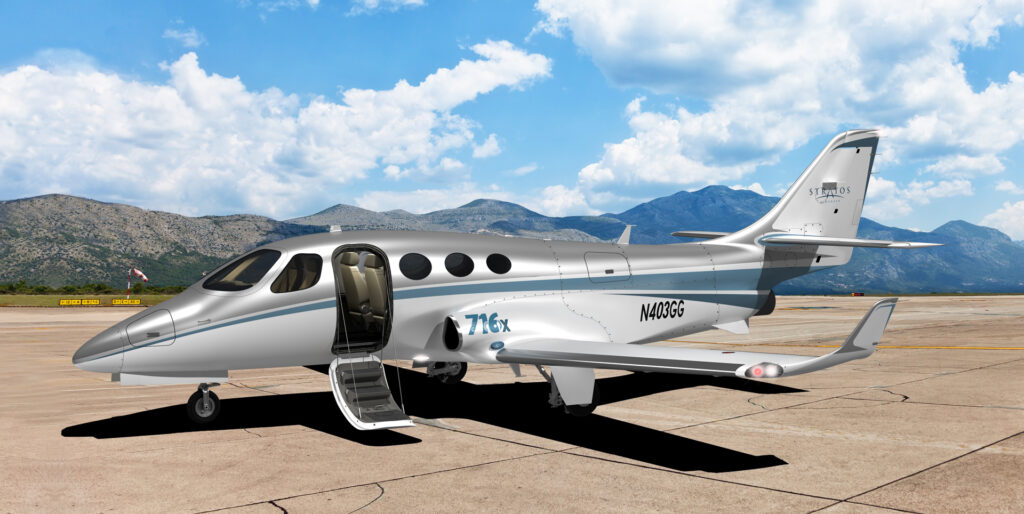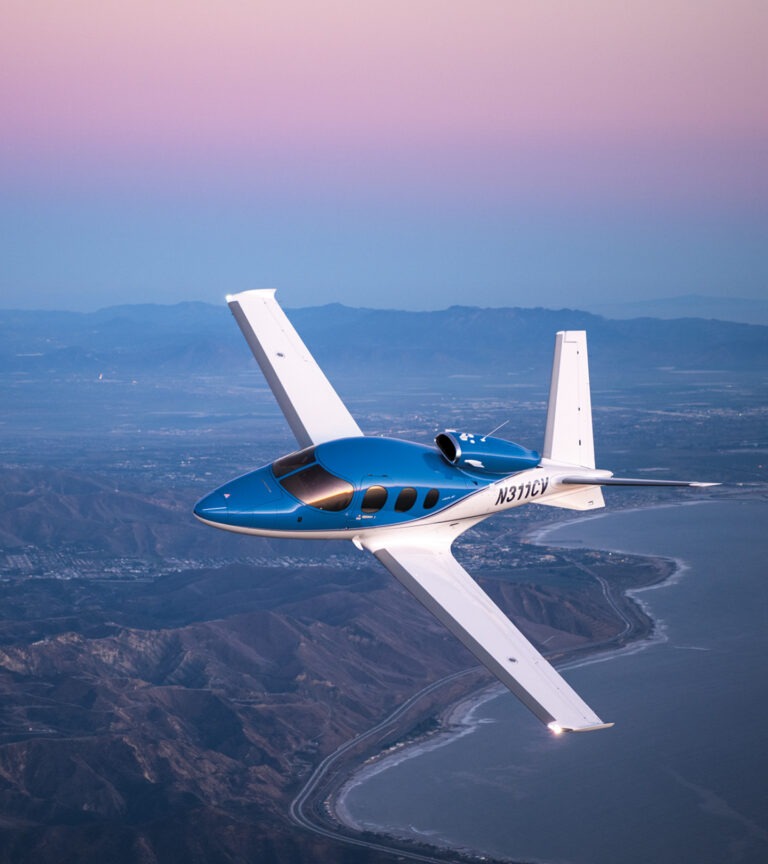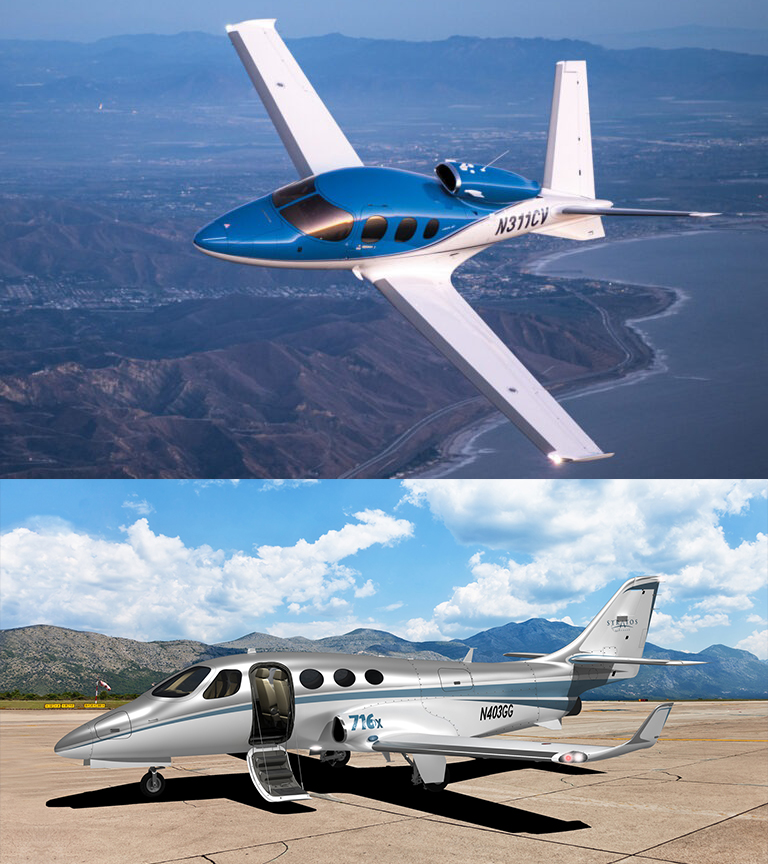If you’re thinking about purchasing an ultra-light jet of the single-pilot, single-engine variety your options are exactly one: the Cirrus Vision Jet. Or, at least that was your only option until Oregon-based aviation firm Stratos launched its 716X jet. While the jet is still in its flight-testing phase, the company has already begun taking orders. It seems that while the Cirrus Vision Jet is a more-than-adequate craft, people appreciate having options. For the first time ever, they’re getting it in the ultra-light, single-engine class.
Lack of competition in the single-pilot, single engine class is largely due to the virtual monopoly of the Cirrus Vision Jet. Most jets of this size are easier to produce as turboprops and, for so long, Cirrus’ technologies made it a market-beater with a substantial moat. Now, Stratos’ focus on this ultra-light category means it’s throwing a full array of resources behind the production of a suitable competitor.
“We combine the range and speed of a high-performance, twin-engine jet with the short-field takeoff capabilities of a single-engine turboprop aircraft,” says Carsten Sundin, Stratos president and cofounder.

Meet the Stratos 716X jet
Part of the appeal of the 716X jet is the mystique surrounding it. Stratos hasn’t been shy about touting the design and viability of its craft in this niche segment of the market, but it has been tight-lipped about the jet’s performance as it undergoes continued testing. Flight testing, which kicked off in July, has been hinted by the company to be successful so far — including the jet’s maiden flight in Redmond, OR, which lasted 22 minutes and saw a climb to 13,500ft.

The 716X is something of a second-generation jet designed specifically to compete with the Cirrus Vision Jet. Stratos’ first jet, the 714, lacked the funding to complete type certification and remains perpetually in development. That hasn’t stopped the company from iteration, however. The 716X improves upon the 714’s design with a longer cabin designed to accommodate six passengers in multiple configurations.
Something truly unique about this craft is the fact that it’ll be manufactured as both production and kit models. The kit model (716X) is expected to hit the market at $2.5 million, with a build time of 2,500 hours. Production models (716) will feature a more powerful Pratt & Whitney 535E turbofan engine, retailing for $3.5 million.
- Cabin size of 4.9ft wide by 4.8ft tall
- 30” of legroom, with six seat configurations
- Lightweight carbon fiber composite construction
- Cruise speed of 400 KTAS

Comparing a market of two
How does the Stratos 716X stack up against the previously unchallenged Cirrus Vision Jet? Assuming current standards, the Stratos offers buyers several advantages that might finally split the market.
For starters, the craft offers a cruising speed that’s about 100 knots faster than the Cirrus Vision jet. That said, it does so at a fuel burn that’s about 30% more than its competitor, so there’s relatively equal tradeoff in speed vs. efficiency. With more than 1,100lbs of thrust over the Vision Jet, the Stratos 716X should give pilots less takeoff roll, better climb rate, and faster cruise.
Perhaps the most notable design difference — and the one that could catapult Stratos into a duopoly with Cirrus — is the decision to place the engine inside the fuselage, rather than hanging it in the slipstream. As a result, the Stratos jet looks to be a sleeker, more powerful player in the ultra-light jet class and a worthy competitor to the yet unchallenged Cirrus Vision Jet.
